This article was medically reviewed by Luba Lee, FNP-BC, MS. Luba Lee, FNP-BC is a Board-Certified Family Nurse Practitioner (FNP) and educator in Tennessee with over a decade of clinical experience. Luba has certifications in Pediatric Advanced Life Support (PALS), Emergency Medicine, Advanced Cardiac Life Support (ACLS), Team Building, and Critical Care Nursing. She received her Master of Science in Nursing (MSN) from the University of Tennessee in 2006.
There are 10 references cited in this article, which can be found at the bottom of the page.
wikiHow marks an article as reader-approved once it receives enough positive feedback. This article has 48 testimonials from our readers, earning it our reader-approved status.
This article has been viewed 5,666,994 times.
Vomiting may be necessary and essential for your body to recover, such as when your body is trying to expel a toxic substance, like with food poisoning. Unfortunately, vomiting can also be triggered by migraine headaches, viral infections, pregnancy, motion sickness, or medication. Vomiting can cause discomfort and lead to dehydration, so you may want to take steps to alleviate your vomiting. Luckily, you can sometimes stop the sensation that causes you to vomit. However, if your symptoms persist, you should visit a healthcare professional.
Steps
Using Relaxation Techniques
-
1Place a cool, damp cloth on your forehead or back of your neck. Never use an ice pack. Especially if your head is throbbing and you feel the sudden onset of heat, this technique might help prevent emesis.
-
2Go outside to get fresh air. Take a short walk around the yard or on the sidewalk, but don't go too far. Breathe a little deeper than normal but nothing out of the ordinary. Fresh air can feel soothing to your lungs and body.Advertisement
-
3Keep your head at a higher level than your body. Put pillows under your head to prop yourself up or sit in a chair. Avoid laying down flat if you can.[1]
-
4Activate your sense of touch. It may be because it distracts your body from fixating on the nausea, or it may be something else entirely. But touching things around you actually helps.To generate a very little bit of pain — nothing serious.
- Try pinching your arm
- Tap your balled-up fist on your thigh
- Pull a little bit of your hair
- Bite your lower lip
- Dig your fingernails into your forearm
-
5Try acupressure. Acupressure is the idea that there are pressure points on your body that can relieve pain. The wrists are what many acupressurists tend to target when nausea and vomiting occur. Acupressure may help some people, but there is not good evidence that it is effective or for how it might work.
- Face your palm up towards your face. Then, place your thumb gently in the middle of your wrist and push to begin gently massaging the area. Slowly pushing on this pressure point may help relieve nausea.
- Put the inner parts of both wrists together and press them into one another. You should be activating the same pressure point as in the example above.
Eating Bland Solids
-
1Try digesting something bland, like crackers. Dry crackers in small amounts may decrease nausea. That's because foods high in starch, such as crackers or toast, may help absorb stomach acids.[2] If eating crackers works, you may have been hungry, not ill.
-
2Start simple and ramp your way up. Remember that, when you begin to eat again, you should start with some simple carbohydrates, such as gelatin. Slowly work your way up to proteins like chicken noodle soup. Save fats for last, as fat is toughest to digest and can disrupt your already weakened stomach.
-
3Suck on a mint to jump-start your intestines in the right direction. Fresh-tasting mints are great as a palate-cleanser and may help reduce nausea.[3]
-
4Chew or sip on ginger. Ginger can calm your nausea and sensation to vomit, in some cases. You can try a piece of ginger, ginger gum, or ginger tea. Choose the option that works best for you.[4]
-
5Avoid acidic, spicy, fatty, or fibrous foods.[5] These foods make your stomach work overtime, meaning that the chance you feel you need to vomit increases. Acidic, spicy, and fatty foods are all self-explanatory. Fibrous foods include many vegetables, meats, and coarse grains.
- If diarrhea accompanied your vomiting, avoid dairy products as well. Like other foods mentioned above, dairy can be hard for the stomach to process.
- Avoid very hot or very cold food.
Drinking Fluids
-
1Stick with water in the beginning. If you've been vomiting a lot recently, drink only small amounts of cool water at a time. Too much water processed too quickly can cause you to begin to throw up.[6]
- If you want, try sucking on an ice cube. The cool water feels good going down your throat and it's nearly impossible to drink too much water by melting the ice cube in your mouth.
-
2Stick with clear liquids, and preferably something with electrolytes. Clear liquids aside from water are helpful in replacing certain essential vitamins that you may have lost while previously vomiting.
- If you can, try to drink liquids that are high in potassium and sodium. These are among the body's most important electrolytes.[7] They are often lost when the body goes through the vomiting process.
- Acceptable "clear" liquids include:
- Weak tea
- Broth
- Apple juice
- Sugar free sports drinks
-
3Use syrups and tonics to help calm your stomach. Over-the-counter Emetrol syrup may work in soothing your upset stomach. Children should have 1-2 teaspoons while adults should have 1-2 tablespoons.
- Syrups like Emetrol can be safely used by children. Although it is often used by women who are pregnant, the manufacturer's guidelines recommend checking with your doctor before taking.
-
4Avoid liquids with caffeine, carbonation, and high amounts of acidity.[8] This includes many sodas and coffee, as well as fruit juices like orange juice, grapefruit juice, or lemonade.
-
5Try to drink a little ginger tea in order to quell your nausea. Ginger has been a renowned nausea-buster for quite some time now, being equal to dramamine in effectiveness in one small study.[9] You can purchase bagged ginger tea or brew your own ginger tea with honey, also called Tisane.
- If you don't want warm tea but still want the soothing benefits of ginger, try eating ginger candies or foods that contain ginger. Try nibbling on a small amount of candied ginger once every 45 minutes. Ginger ale may not have enough ginger or contain real ginger. [10]
Using Medication
-
1Try Dramamine if your vomiting is induced by motion. Dramamine, or "dimenhydrinate", is used to cure nausea, an upset stomach and vomiting. It should not be taken by children under 2 years of age. If you suspect that a certain activity is going to make you nauseous or might induce vomiting, take Dramamine 30 to 60 minutes before starting the activity.[11]
-
2If pain is accompanying your illness or vomiting, take acetaminophen. Unlike NSAIDs (non-steroidal anti-inflammatory drugs), such as aspirin or ibuprofen, acetaminophen will relieve pain without making your nausea any worse.
-
3Get a prescription for a scopolamine patch. Scopolamine patches prevent nausea and vomiting and are applied as a patch to the skin directly behind the ear.[12] Be advised, however, that scopolamine patches carry a long list of side-effects that may outweigh the troubling but tolerable existence of nausea.
Expert Q&A
-
QuestionWhenever I am ready to vomit and try to walk to the bathroom, my legs are weak. What should I do?
 Luba Lee, FNP-BC, MSLuba Lee, FNP-BC is a Board-Certified Family Nurse Practitioner (FNP) and educator in Tennessee with over a decade of clinical experience. Luba has certifications in Pediatric Advanced Life Support (PALS), Emergency Medicine, Advanced Cardiac Life Support (ACLS), Team Building, and Critical Care Nursing. She received her Master of Science in Nursing (MSN) from the University of Tennessee in 2006.
Luba Lee, FNP-BC, MSLuba Lee, FNP-BC is a Board-Certified Family Nurse Practitioner (FNP) and educator in Tennessee with over a decade of clinical experience. Luba has certifications in Pediatric Advanced Life Support (PALS), Emergency Medicine, Advanced Cardiac Life Support (ACLS), Team Building, and Critical Care Nursing. She received her Master of Science in Nursing (MSN) from the University of Tennessee in 2006.
Board-Certified Family Nurse Practitioner Keep a trash can or sick bag next to you at all times. This way you can vomit into it without having to get up.
Keep a trash can or sick bag next to you at all times. This way you can vomit into it without having to get up. -
QuestionWhat do you do if you feel stuff in your throat that tastes like vomit and you can't get rid of it?
 Luba Lee, FNP-BC, MSLuba Lee, FNP-BC is a Board-Certified Family Nurse Practitioner (FNP) and educator in Tennessee with over a decade of clinical experience. Luba has certifications in Pediatric Advanced Life Support (PALS), Emergency Medicine, Advanced Cardiac Life Support (ACLS), Team Building, and Critical Care Nursing. She received her Master of Science in Nursing (MSN) from the University of Tennessee in 2006.
Luba Lee, FNP-BC, MSLuba Lee, FNP-BC is a Board-Certified Family Nurse Practitioner (FNP) and educator in Tennessee with over a decade of clinical experience. Luba has certifications in Pediatric Advanced Life Support (PALS), Emergency Medicine, Advanced Cardiac Life Support (ACLS), Team Building, and Critical Care Nursing. She received her Master of Science in Nursing (MSN) from the University of Tennessee in 2006.
Board-Certified Family Nurse Practitioner You may be experiencing gastro-esophageal reflux, which is when the contents of your stomach get inside your mouth. Although this is unpleasant, your doctor can diagnose it and prescribe treatment. Make an appointment with your healthcare provider if it persists.
You may be experiencing gastro-esophageal reflux, which is when the contents of your stomach get inside your mouth. Although this is unpleasant, your doctor can diagnose it and prescribe treatment. Make an appointment with your healthcare provider if it persists.
Warnings
- If you eat fast, your stomach may not have time to keep it all down; resulting in it all coming back up.⧼thumbs_response⧽
- If you can't help yourself from throwing up, and are doing it regularly, go see a doctor immediately.⧼thumbs_response⧽
- Throwing up isn't supposed to be used to make yourself thinner. Bulimia is a disorder, and is very unhealthy. Seek medical advice.⧼thumbs_response⧽
- Diabetics should consult with their doctor before consuming sugary syrups.⧼thumbs_response⧽
- Although medication is not typically administered if your vomiting is caused by a toxin or food poisoning, you could take the over-the-counter medication Emetrol to relieve vomiting. Otherwise, see your doctor to ask about other medications you could take.⧼thumbs_response⧽
Things You'll Need
- The right mentality
- Mints, dry crackers or toast
- Ginger ale or other clear liquids
- Tea, juices, or sports drinks
- Bucket to vomit in
- Wet towel or wet tissues
- Distractions such as TV, books, or games
References
- ↑ https://www.webmd.com/digestive-disorders/understanding-nausea-vomiting-prevention
- ↑ https://health.clevelandclinic.org/ginger-ale-and-saltine-crackers-5-ways-to-ease-stomach-pain-and-nausea/
- ↑ https://www.uofmhealth.org/health-library/tv3801
- ↑ https://www.ncbi.nlm.nih.gov/pmc/articles/PMC4818021/
- ↑ https://health.clevelandclinic.org/ginger-ale-and-saltine-crackers-5-ways-to-ease-stomach-pain-and-nausea/
- ↑ https://my.clevelandclinic.org/health/symptoms/8106-nausea--vomiting#care-and-treatment
- ↑ http://www.ncbi.nlm.nih.gov/pubmed/7965369
- ↑ https://health.clevelandclinic.org/ginger-ale-and-saltine-crackers-5-ways-to-ease-stomach-pain-and-nausea/
- ↑ http://www.webmd.com/food-recipes/features/warm-up-to-ginger?page=2
- ↑ https://health.clevelandclinic.org/ginger-ale-and-saltine-crackers-5-ways-to-ease-stomach-pain-and-nausea/
- ↑ http://www.webmd.com/drugs/drug-10007-Dramamine+Oral.aspx?drugid=10007&drugname=Dramamine+Oral
- ↑ http://www.nlm.nih.gov/medlineplus/druginfo/meds/a682509.html
- ↑ https://www.mayoclinic.org/symptoms/nausea/basics/when-to-see-doctor/sym-20050736
About This Article
If you’re dealing with the pain and frustration of repeated vomiting, try soothing yourself by placing a cool, damp cloth on your forehead or the back of your neck. You may also be able to relax and break the cycle of nausea by taking a brief walk outdoors in the fresh air while taking deep, steady breaths. If you feel too sick to walk around, lie down and elevate your legs on some pillows. Finally, try distracting yourself from the sensations of nausea by gently pinching your arm or massaging your wrist. For more advice from our Medical co-author, including how to soothe nausea with food and drink or medications, keep reading!





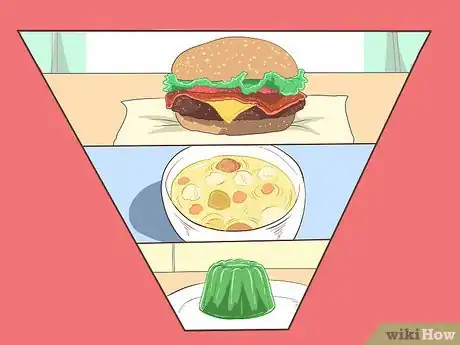
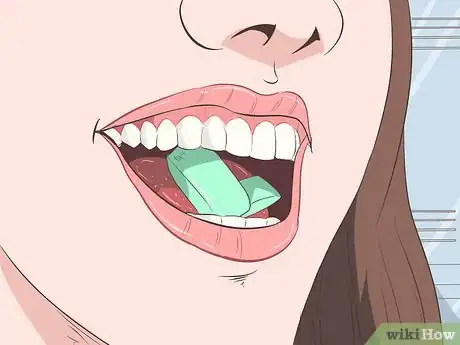
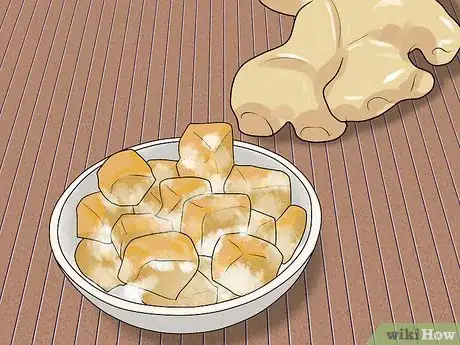
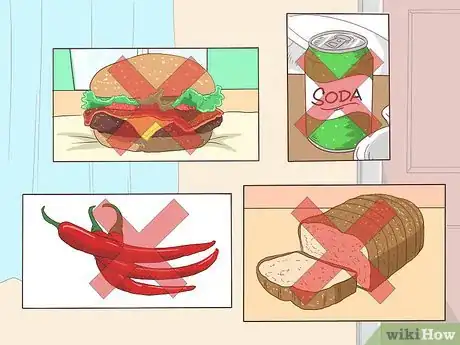
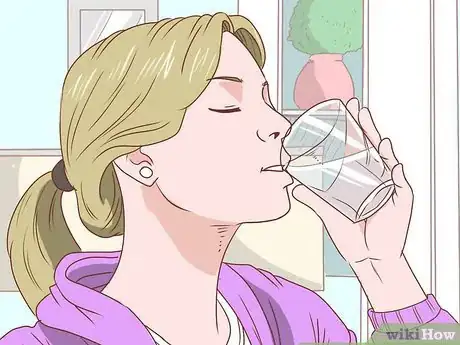
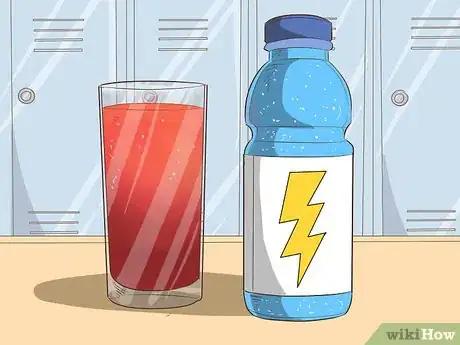

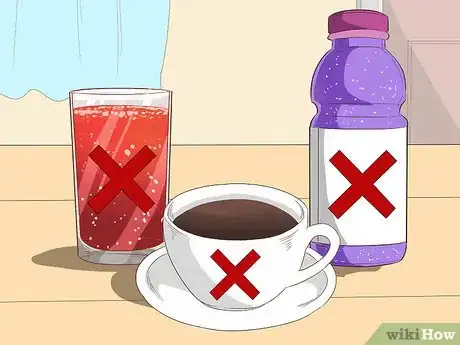
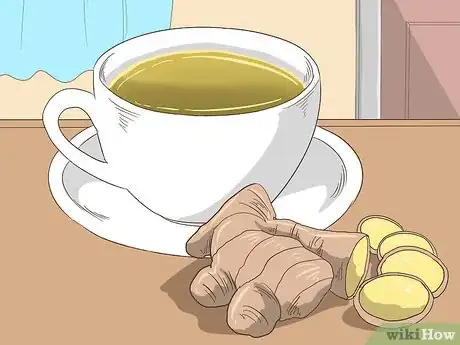
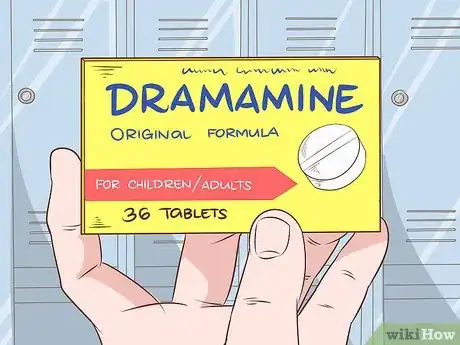

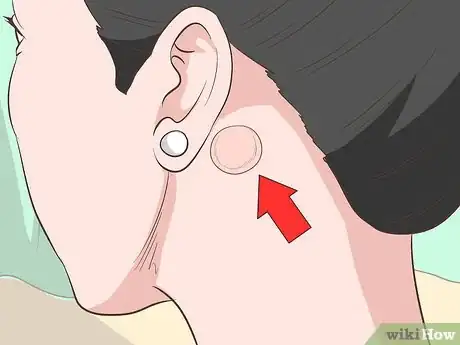









-Step-9-Version-5.webp)

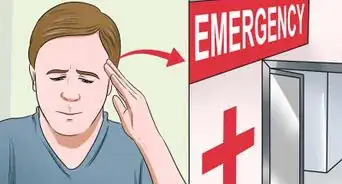
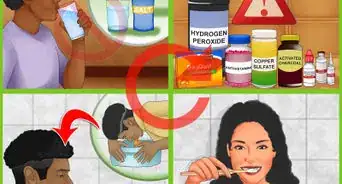



















































Medical Disclaimer
The content of this article is not intended to be a substitute for professional medical advice, examination, diagnosis, or treatment. You should always contact your doctor or other qualified healthcare professional before starting, changing, or stopping any kind of health treatment.
Read More...